


















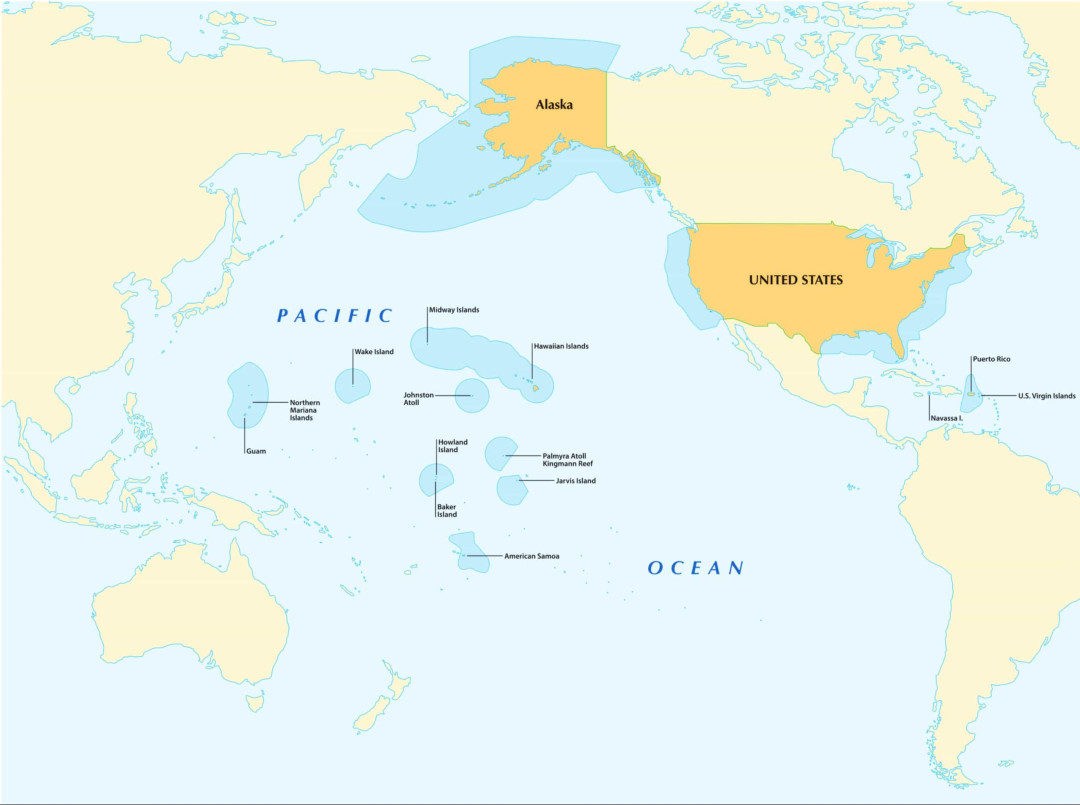









See Also
See Again
© Getty Images
0 / 29 Fotos
Puerto Rico
- Puerto Rico is anchored in the Caribbean Sea approximately 1,600 km (1,000 mi) southeast of Miami, Florida. With around 1.2 million residents, this unincorporated territory with Commonwealth status is the largest and most populous territory of the United States. Pictured is the UNESCO World Heritage Site of Castillo San Felipe del Morro in Old San Juan.
© Shutterstock
1 / 29 Fotos
Puerto Rico
- Besides its wealth of cultural draws, including an amazing variety of architecture, the island preserves three terrestrial ecoregions: Puerto Rican moist forests, Puerto Rican dry forests, and Greater Antilles mangroves. Among the destination's fauna is the endemic Puerto Rican amazon, a critically endangered parrot.
© Shutterstock
2 / 29 Fotos
Guam
- The unincorporated and organized territory of Guam in the western Pacific Ocean is the second largest territory. Its capital is Hagåtña (pictured).The destination was the scene of the Battle of Guam in 1944, one of the most famous engagements of the Pacific Theater, which saw American forces liberate the island from the Japanese.
© Shutterstock
3 / 29 Fotos
Guam
- Guam's beaches and reefs are ecological hotspots and make up a significant percentage of the island's biodiversity. Tumon Bay is one of several marine reserves. Guam's interior meanwhile is partly blanketed by the Marianas tropical dry forest ecoregion, which guards a number of wildlife reserves. Pictured is picturesque Tanguisson Beach.
© Shutterstock
4 / 29 Fotos
US Virgin Islands
- Set in the Caribbean and geographically part of the Virgin Islands archipelago, the US Virgin Islands consist of the main islands of Saint Croix, Saint John, and Saint Thomas and 50 other surrounding minor islands and cays. With a population of a little over 87,000, the destination is the third-largest US territory, unincorporated and organized. Pictured is the territory's capital Charlotte Amalie, on the island of St. Thomas.
© Shutterstock
5 / 29 Fotos
US Virgin Islands
- The islands are known for their white sand beaches, especially those at Magens Bay on Saint Thomas and Trunk Bay (pictured) on Saint John. The islands' culture derives chiefly from West African, European, and American traditions to make the destination a lively and exciting Caribbean vacation hotspot. Nature lovers, meanwhile, will find sanctuary in any one of several national park sites.
© Shutterstock
6 / 29 Fotos
Northern Mariana Islands
- This unincorporated US territory with Commonwealth status consists of 14 islands moored in the northwestern Pacific Ocean. A little over 55,000 people call this remote archipelago home, with 47,000 of them based on the largest island, Saipan (pictured).
© Shutterstock
7 / 29 Fotos
Northern Mariana Islands
- Historically, the economy of this tropical outpost has relied on tourism, with unspoiled island retreats including Mañagaha (pictured) serving as luxury bolt holes for the more discerning visitor. Mañagaha is in fact listed on the United States National Register of Historic Places as a historic district.
© Shutterstock
8 / 29 Fotos
American Samoa
- Located in the South Pacific Ocean, unincorporated and unorganized American Samoa is the southernmost territory of the United States and one of two US territories south of the Equator, along with the uninhabited Jarvis Island. The destination consists of five main islands and two coral atolls. The capital, Pago Pago (pictured), is on the main island of Tutuila.
© Shutterstock
9 / 29 Fotos
American Samoa
- The National Park of American Samoa is distributed across three islands—Tutuila, Ofu, and Ta‘ū—and is the only US national park south of the Equator. The park includes a trail to the top of Mount Alava on Tutuila, and historic WWII gun emplacement sites at Breakers Point and Blunt's Point.
© Shutterstock
10 / 29 Fotos
Midway Atoll
- Synonymous with the 1942 Battle of Midway, one of the most consequential encounters in the history of naval warfare, the unincorporated, unorganized territory of Midway is an atoll sunk in the North Pacific Ocean. Roughly equidistant between North America and Asia, Midway is the only island in the Hawaiian archipelago that is not part of the state of Hawaii.
© Getty Images
11 / 29 Fotos
Midway Atoll
- Midway falls within the UNESCO World Heritage-listed Papahānaumokuākea Marine National Monument, one of the world's largest protected areas that encompasses 10 islands and atolls of the Northwestern Hawaiian Islands. The Laysan and black-footed albatross (pictured), plus the rarer short-tailed albatrosses, number among the iconic wildlife that call this region of the Pacific home.
© Shutterstock
12 / 29 Fotos
Palmyra Atoll
- One of the Northern Line Islands and located south of the Hawaiian Islands, Palmyra Atoll marks the approximate center of the Pacific Ocean. The atoll has no permanent population and is administered as an incorporated, unorganized US territory by the US Fish and Wildlife Service.
© Getty Images
13 / 29 Fotos
Palmyra Atoll
- Not much more than three lagoons separated by coral reefs, Palmyra Atoll is owned by the US-based Nature Conservancy and is part of the Pacific Remote Islands Marine National Monument.
© Shutterstock
14 / 29 Fotos
Baker Island
- Baker Island is an uninhabited atoll lying just north of the Equator in the central Pacific Ocean. Its modest land mass—a coral island surrounded by a narrow fringing reef—forms the Baker Island National Wildlife Refuge and is an unincorporated and unorganized territory of the US. In the mid-1930s, the US government initiated the American Equatorial Islands Colonization Project on Baker Island and neighboring Howland Island essentially to build weather stations and landing fields for military and commercial use on air routes between Australia and California. The project ended in early 1942 when the colonists were rescued from the islands at the start of the war in the Pacific.
© Public Domain
15 / 29 Fotos
Baker Island
- Today, the Baker Island National Wildlife Reserve serves as sanctuary for a variety of wildlife, including the masked booby (pictured), the red-footed booby, and the brown noddy, among other tropical birdlife. Public entry to the island is generally restricted to scientists and educators.
© Getty Images
16 / 29 Fotos
Howland Island
- This smudge of land just north of the Equator in the central Pacific Ocean, about 1,700 nautical miles (3,100 km) southwest of Honolulu, Hawaii, is best known as the island American aviator Amelia Earhart was searching for but never reached when her airplane disappeared on July 2, 1937, during her planned round-the-world flight. The uninhabited atoll is an unincorporated, unorganized territory of the United States, and together with Baker Island forms part of the Phoenix Islands.
© Getty Images
17 / 29 Fotos
Howland Island
- Howland Island falls under the auspices of the US Fish and Wildlife Service and is part of the wider Pacific Remote Islands Marine National Monument. Pictured in flight is a brown booby, a seabird typical of the region.
© Getty Images
18 / 29 Fotos
Jarvis Island
- Located in the South Pacific Ocean, unincorporated, unorganized Jarvis Island is one of two United States territories that are in the Southern Hemisphere, the other being American Samoa.
© Shutterstock
19 / 29 Fotos
Jarvis Island
- Jarvis Island has an arid tropical desert climate, the atoll essentially a dried-up lagoon surrounded by a reef. Underwater, the ring of coral, teeming with life, is effectively the Jarvis Island National Wildlife Refuge.
© Public Domain
20 / 29 Fotos
Johnston Atoll
- For decades this unincorporated, unorganized US territory served as a military airbase and refueling depot. It later became a testing site for nuclear and biological weapons, and was also a secret missile base. It was ultimately used as a site for the storage and disposal of chemical weapons and Agent Orange. The impact on the environment was considerable and Johnston Atoll is still monitored today for signs of contamination.
© Public Domain
21 / 29 Fotos
Johnston Atoll
- Fortunately, the atoll today is home to thriving communities of nesting seabirds and has significant marine biodiversity, testament indeed to Mother Nature's resilience. Among the species found in its waters is the endangered green turtle.
© Shutterstock
22 / 29 Fotos
Kingman Reef
- Largely submerged and uninhabited, Kingman Reef was discovered on June 14, 1798 by the American explorer and sea captain Edmund Fanning (1769–1841), known as the "Pathfinder of the Pacific." The US flag was raised over the atoll in 1922.
© Public Domain
23 / 29 Fotos
Kingman Reef
- Lying in the North Pacific Ocean, Kingman Reef is one of the unincorporated, unorganized territories of the United States in Oceania. Administered by the US Fish and Wildlife Service as the Kingman Reef National Wildlife Refuge, the destination is known for an astonishing variety of marine life, and in particular for the abundance of giant clams found in the shallows.
© Shutterstock
24 / 29 Fotos
Wake Island
- Wake Island is one of the most isolated islands in the world. Its nearest inhabited neighbor lies 953 km (592 mi) to the southeast. While a unincorporated, unorganized US territory, the island is also claimed by the Republic of the Marshall islands. In the 1930s, the island served as a Pan American "Flying Clippers" base. Wake Island was occupied by Japanese forces from mid-December 1941 until it was surrendered to the US in September 1945 at the end of the war.
© Public Domain
25 / 29 Fotos
Wake Island
- Today, Wake Island is administered by the United States Airforce, with Wake Island Airfield the hub of activity. The submerged and emergent islands meanwhile comprise a unit of the Pacific Remote Islands Marine National Monument.
© Public Domain
26 / 29 Fotos
Navassa Island
- Navassa Island is a spec of land floating in the Caribbean Sea and has been claimed by the United States since 1857. However, Haiti's claim over the island dates back to 1697. Despite the ongoing dispute, uninhabited Navassa remains a unincorporated, unorganized US territory.
© Public Domain
27 / 29 Fotos
Navassa Island
- Bereft of any human activity, the island, with its surrounding marine waters, has been recognized as an Important Bird Area by BirdLife International because it supports important breeding colonies of red-footed boobies and magnificent frigatebirds (pictured), as well as hundreds of near-threatened white-crowned pigeons. Sources: (U.S. Department of the Interior) (IUCN Red List) (Britannica) (The Nature Conservancy) (EPA) (The Institute of World Politics)
© Getty Images
28 / 29 Fotos
© Getty Images
0 / 29 Fotos
Puerto Rico
- Puerto Rico is anchored in the Caribbean Sea approximately 1,600 km (1,000 mi) southeast of Miami, Florida. With around 1.2 million residents, this unincorporated territory with Commonwealth status is the largest and most populous territory of the United States. Pictured is the UNESCO World Heritage Site of Castillo San Felipe del Morro in Old San Juan.
© Shutterstock
1 / 29 Fotos
Puerto Rico
- Besides its wealth of cultural draws, including an amazing variety of architecture, the island preserves three terrestrial ecoregions: Puerto Rican moist forests, Puerto Rican dry forests, and Greater Antilles mangroves. Among the destination's fauna is the endemic Puerto Rican amazon, a critically endangered parrot.
© Shutterstock
2 / 29 Fotos
Guam
- The unincorporated and organized territory of Guam in the western Pacific Ocean is the second largest territory. Its capital is Hagåtña (pictured).The destination was the scene of the Battle of Guam in 1944, one of the most famous engagements of the Pacific Theater, which saw American forces liberate the island from the Japanese.
© Shutterstock
3 / 29 Fotos
Guam
- Guam's beaches and reefs are ecological hotspots and make up a significant percentage of the island's biodiversity. Tumon Bay is one of several marine reserves. Guam's interior meanwhile is partly blanketed by the Marianas tropical dry forest ecoregion, which guards a number of wildlife reserves. Pictured is picturesque Tanguisson Beach.
© Shutterstock
4 / 29 Fotos
US Virgin Islands
- Set in the Caribbean and geographically part of the Virgin Islands archipelago, the US Virgin Islands consist of the main islands of Saint Croix, Saint John, and Saint Thomas and 50 other surrounding minor islands and cays. With a population of a little over 87,000, the destination is the third-largest US territory, unincorporated and organized. Pictured is the territory's capital Charlotte Amalie, on the island of St. Thomas.
© Shutterstock
5 / 29 Fotos
US Virgin Islands
- The islands are known for their white sand beaches, especially those at Magens Bay on Saint Thomas and Trunk Bay (pictured) on Saint John. The islands' culture derives chiefly from West African, European, and American traditions to make the destination a lively and exciting Caribbean vacation hotspot. Nature lovers, meanwhile, will find sanctuary in any one of several national park sites.
© Shutterstock
6 / 29 Fotos
Northern Mariana Islands
- This unincorporated US territory with Commonwealth status consists of 14 islands moored in the northwestern Pacific Ocean. A little over 55,000 people call this remote archipelago home, with 47,000 of them based on the largest island, Saipan (pictured).
© Shutterstock
7 / 29 Fotos
Northern Mariana Islands
- Historically, the economy of this tropical outpost has relied on tourism, with unspoiled island retreats including Mañagaha (pictured) serving as luxury bolt holes for the more discerning visitor. Mañagaha is in fact listed on the United States National Register of Historic Places as a historic district.
© Shutterstock
8 / 29 Fotos
American Samoa
- Located in the South Pacific Ocean, unincorporated and unorganized American Samoa is the southernmost territory of the United States and one of two US territories south of the Equator, along with the uninhabited Jarvis Island. The destination consists of five main islands and two coral atolls. The capital, Pago Pago (pictured), is on the main island of Tutuila.
© Shutterstock
9 / 29 Fotos
American Samoa
- The National Park of American Samoa is distributed across three islands—Tutuila, Ofu, and Ta‘ū—and is the only US national park south of the Equator. The park includes a trail to the top of Mount Alava on Tutuila, and historic WWII gun emplacement sites at Breakers Point and Blunt's Point.
© Shutterstock
10 / 29 Fotos
Midway Atoll
- Synonymous with the 1942 Battle of Midway, one of the most consequential encounters in the history of naval warfare, the unincorporated, unorganized territory of Midway is an atoll sunk in the North Pacific Ocean. Roughly equidistant between North America and Asia, Midway is the only island in the Hawaiian archipelago that is not part of the state of Hawaii.
© Getty Images
11 / 29 Fotos
Midway Atoll
- Midway falls within the UNESCO World Heritage-listed Papahānaumokuākea Marine National Monument, one of the world's largest protected areas that encompasses 10 islands and atolls of the Northwestern Hawaiian Islands. The Laysan and black-footed albatross (pictured), plus the rarer short-tailed albatrosses, number among the iconic wildlife that call this region of the Pacific home.
© Shutterstock
12 / 29 Fotos
Palmyra Atoll
- One of the Northern Line Islands and located south of the Hawaiian Islands, Palmyra Atoll marks the approximate center of the Pacific Ocean. The atoll has no permanent population and is administered as an incorporated, unorganized US territory by the US Fish and Wildlife Service.
© Getty Images
13 / 29 Fotos
Palmyra Atoll
- Not much more than three lagoons separated by coral reefs, Palmyra Atoll is owned by the US-based Nature Conservancy and is part of the Pacific Remote Islands Marine National Monument.
© Shutterstock
14 / 29 Fotos
Baker Island
- Baker Island is an uninhabited atoll lying just north of the Equator in the central Pacific Ocean. Its modest land mass—a coral island surrounded by a narrow fringing reef—forms the Baker Island National Wildlife Refuge and is an unincorporated and unorganized territory of the US. In the mid-1930s, the US government initiated the American Equatorial Islands Colonization Project on Baker Island and neighboring Howland Island essentially to build weather stations and landing fields for military and commercial use on air routes between Australia and California. The project ended in early 1942 when the colonists were rescued from the islands at the start of the war in the Pacific.
© Public Domain
15 / 29 Fotos
Baker Island
- Today, the Baker Island National Wildlife Reserve serves as sanctuary for a variety of wildlife, including the masked booby (pictured), the red-footed booby, and the brown noddy, among other tropical birdlife. Public entry to the island is generally restricted to scientists and educators.
© Getty Images
16 / 29 Fotos
Howland Island
- This smudge of land just north of the Equator in the central Pacific Ocean, about 1,700 nautical miles (3,100 km) southwest of Honolulu, Hawaii, is best known as the island American aviator Amelia Earhart was searching for but never reached when her airplane disappeared on July 2, 1937, during her planned round-the-world flight. The uninhabited atoll is an unincorporated, unorganized territory of the United States, and together with Baker Island forms part of the Phoenix Islands.
© Getty Images
17 / 29 Fotos
Howland Island
- Howland Island falls under the auspices of the US Fish and Wildlife Service and is part of the wider Pacific Remote Islands Marine National Monument. Pictured in flight is a brown booby, a seabird typical of the region.
© Getty Images
18 / 29 Fotos
Jarvis Island
- Located in the South Pacific Ocean, unincorporated, unorganized Jarvis Island is one of two United States territories that are in the Southern Hemisphere, the other being American Samoa.
© Shutterstock
19 / 29 Fotos
Jarvis Island
- Jarvis Island has an arid tropical desert climate, the atoll essentially a dried-up lagoon surrounded by a reef. Underwater, the ring of coral, teeming with life, is effectively the Jarvis Island National Wildlife Refuge.
© Public Domain
20 / 29 Fotos
Johnston Atoll
- For decades this unincorporated, unorganized US territory served as a military airbase and refueling depot. It later became a testing site for nuclear and biological weapons, and was also a secret missile base. It was ultimately used as a site for the storage and disposal of chemical weapons and Agent Orange. The impact on the environment was considerable and Johnston Atoll is still monitored today for signs of contamination.
© Public Domain
21 / 29 Fotos
Johnston Atoll
- Fortunately, the atoll today is home to thriving communities of nesting seabirds and has significant marine biodiversity, testament indeed to Mother Nature's resilience. Among the species found in its waters is the endangered green turtle.
© Shutterstock
22 / 29 Fotos
Kingman Reef
- Largely submerged and uninhabited, Kingman Reef was discovered on June 14, 1798 by the American explorer and sea captain Edmund Fanning (1769–1841), known as the "Pathfinder of the Pacific." The US flag was raised over the atoll in 1922.
© Public Domain
23 / 29 Fotos
Kingman Reef
- Lying in the North Pacific Ocean, Kingman Reef is one of the unincorporated, unorganized territories of the United States in Oceania. Administered by the US Fish and Wildlife Service as the Kingman Reef National Wildlife Refuge, the destination is known for an astonishing variety of marine life, and in particular for the abundance of giant clams found in the shallows.
© Shutterstock
24 / 29 Fotos
Wake Island
- Wake Island is one of the most isolated islands in the world. Its nearest inhabited neighbor lies 953 km (592 mi) to the southeast. While a unincorporated, unorganized US territory, the island is also claimed by the Republic of the Marshall islands. In the 1930s, the island served as a Pan American "Flying Clippers" base. Wake Island was occupied by Japanese forces from mid-December 1941 until it was surrendered to the US in September 1945 at the end of the war.
© Public Domain
25 / 29 Fotos
Wake Island
- Today, Wake Island is administered by the United States Airforce, with Wake Island Airfield the hub of activity. The submerged and emergent islands meanwhile comprise a unit of the Pacific Remote Islands Marine National Monument.
© Public Domain
26 / 29 Fotos
Navassa Island
- Navassa Island is a spec of land floating in the Caribbean Sea and has been claimed by the United States since 1857. However, Haiti's claim over the island dates back to 1697. Despite the ongoing dispute, uninhabited Navassa remains a unincorporated, unorganized US territory.
© Public Domain
27 / 29 Fotos
Navassa Island
- Bereft of any human activity, the island, with its surrounding marine waters, has been recognized as an Important Bird Area by BirdLife International because it supports important breeding colonies of red-footed boobies and magnificent frigatebirds (pictured), as well as hundreds of near-threatened white-crowned pigeons. Sources: (U.S. Department of the Interior) (IUCN Red List) (Britannica) (The Nature Conservancy) (EPA) (The Institute of World Politics)
© Getty Images
28 / 29 Fotos
Discover these US territories in the Caribbean Sea and the Pacific Ocean
There are 14 territories overseen by the US federal government
© Getty Images
Besides its 50 states, did you know that there are 14 territories in the Caribbean Sea and the Pacific Ocean overseen by the US federal government? In fact, widespread communities and areas are a distinguishing feature of the United States. An unincorporated territory is one that the United States Congress has determined only selected parts of the United States Constitution apply to. An incorporated territory, of which only one currently exists, is one in which the United States Congress has applied the full corpus of the Constitution. Furthermore, if a US territory is termed organized it means it's an insular area for which the United States Congress has enacted an organic act. An unorganized territory means Congress has not enacted an organic act. Commonwealth territories are those that enjoy a more highly developed relationship. Intrigued, but confused?
Click through and journey to these US territories, some of which are familiar, while others are little-known destinations anchored in a vast ocean.
RECOMMENDED FOR YOU



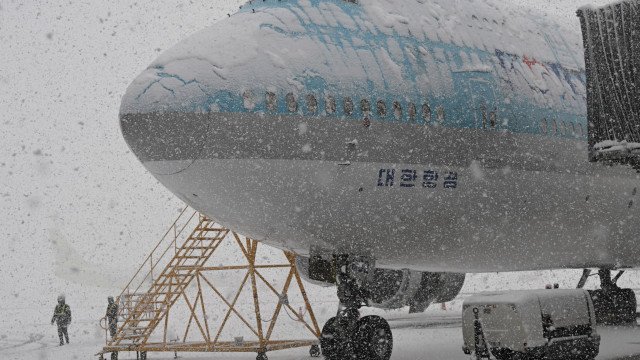
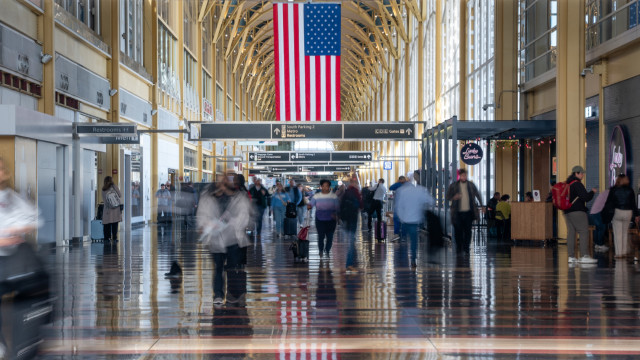
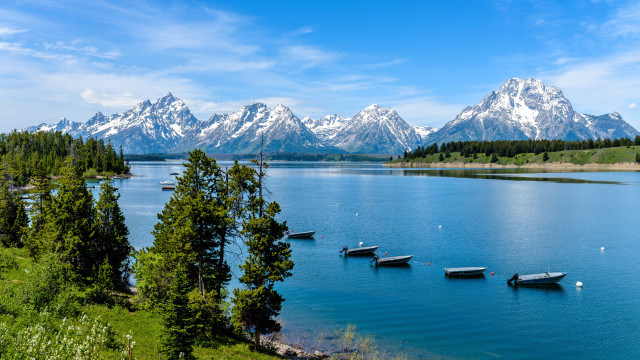





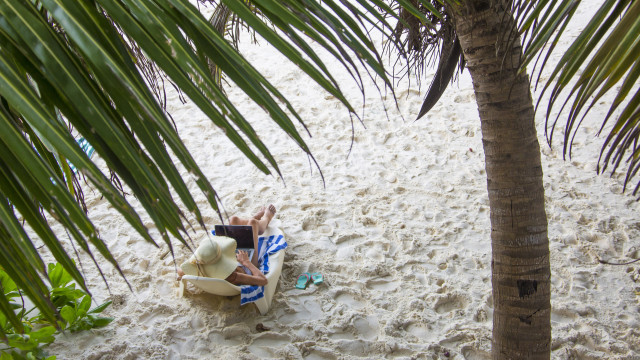
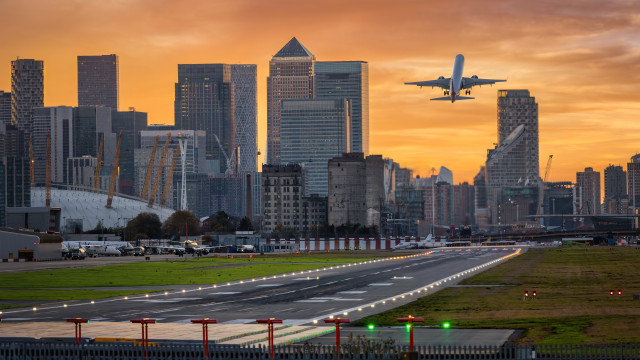
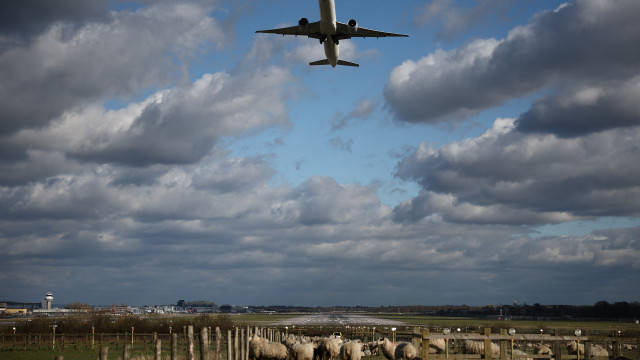


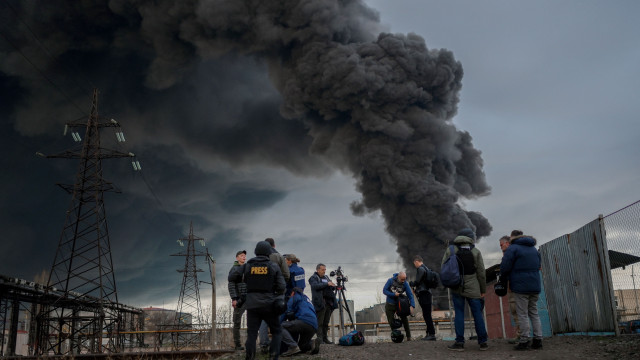
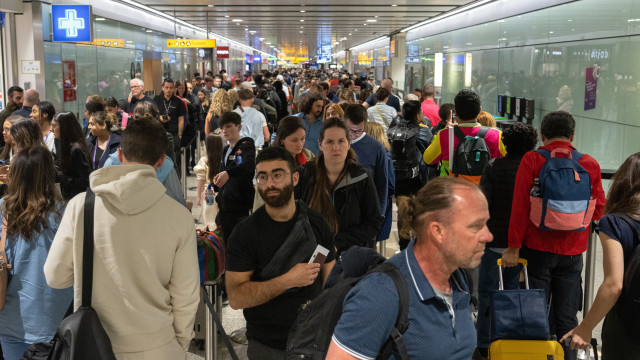



MOST READ
- Last Hour
- Last Day
- Last Week








